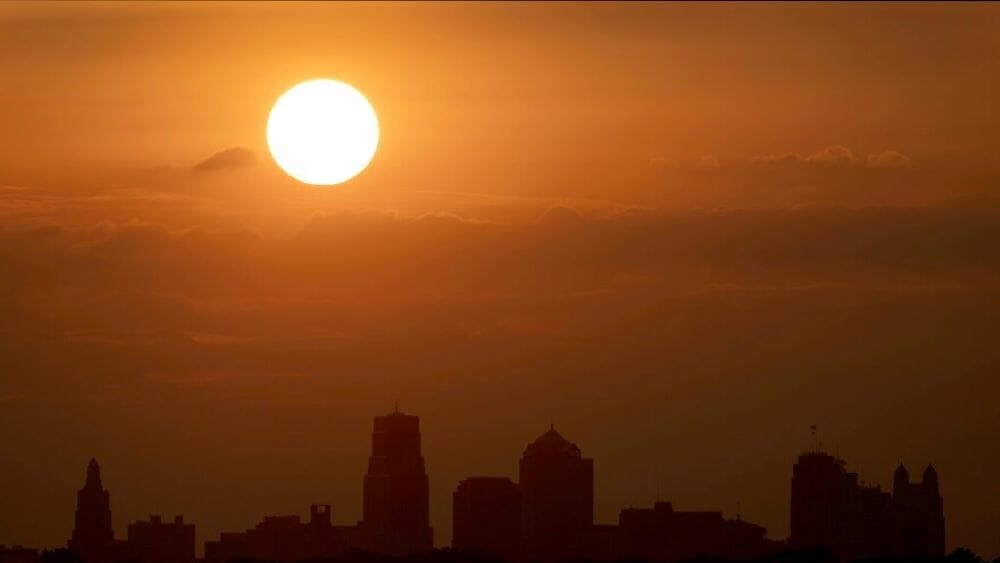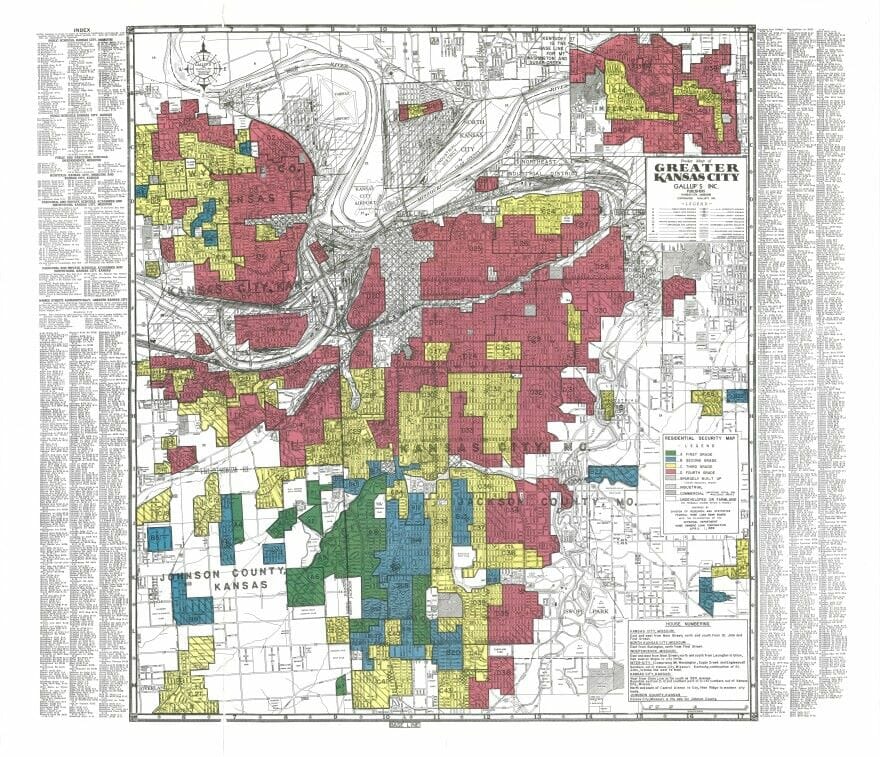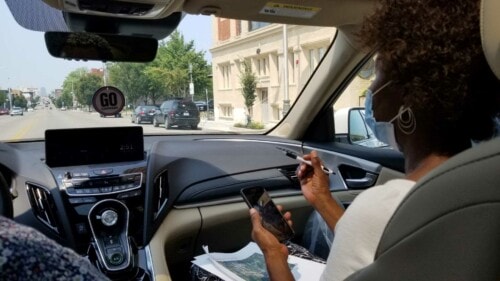Heat Islands Make Dangerous Temperatures Even Worse for Some Some Kansas Citians Feel Much Hotter Temperatures
 In parts of downtown Kansas City and in certain swaths of Wyandotte County, heat islands may result in up to an 11-degree temperature increase. (Charlie Riedel | Associated Press)
In parts of downtown Kansas City and in certain swaths of Wyandotte County, heat islands may result in up to an 11-degree temperature increase. (Charlie Riedel | Associated Press)
Published July 31st, 2023 at 10:56 AM
If you’ve stepped outside for even a brief moment in recent days, you have certainly felt Kansas City’s scorching heat wave.
Temperatures are expected to remain at least in the 90s for the next week, but temperatures are even higher in some parts of the city.
According to the Climate+Energy Project, this is because of the heat island effect: urbanized areas that experience higher temperatures than outlying areas, predominantly affecting areas with more buildings and less greenery to absorb and re-emit that heat.
In Kansas City, that also coincides with historically underserved communities that were subject to redlining. As a result, there is often more paved surfaces.
According to a Climate+Energy Project report, districts that had Home Owners Loan Corpoation ratings of “D” and “C” — which designated “hazardous” and “declining” neighborhoods not eligible for most home loans or investments — tend to have higher surface temperatures and fewer trees.
Those low-rated neighborhoods include Rosedale, parts of Westport and Midtown, neighborhoods around Swope Parkway, Blue Valley and the Historic Northeast, Armourdale, many parts of Kansas City, Kansas, and more.

“That can make cities less livable and increase the risk of heat-related health complications,” said Dorothy Barnett, executive director for the Climate+Energy Project. “It already amplifies the dangerous heat waves that we’re experiencing right now, and for folks that don’t have access to green space they’re seeing 108, 110 degrees.”
According to data from the National Oceanic and Atmospheric Administration, dangerous levels of heat were forecast across many areas of the United States on Friday. The National Weather Services — which estimated a heat index of 110 for the afternoon — called it a “very unusual event” and warned that there will be little to no cooling overnight.
At Climate Central, researchers recently published a study looking at the land cover within certain census tracts to calculate the heat island effect.
In the Kansas City metro, about 783,000 people will experience at least an eight-degree increase in temperature due to the heat island effect.
The effect is especially pronounced in downtown Kansas City and in certain swaths of Wyandotte County, where people may experience as much as an 11-degree increase.
Barnett says the heat island effect does not just mean hotter temperatures but increased energy usage, which can often lead to unpayable bills.
“If they have access to an air conditioner, this kind of higher temperature makes them run their air conditioner even more than someone who is in the same general vicinity, but has access to a home that has been weatherized or that has high-efficiency heating or air conditioning in this case,” Barnett said. “It really is a matter of equity when you think about urban heat islands.”
How to Get Help in Heat Waves
In Missouri, state law prevents service disconnection for nonpayment if the National Weather Service local forecast predicts that the temperature will rise above 95 degrees for the next day, or the heat index is predicted to rise above 105 degrees.
While Kansas does not have this same law, Gina Penzig, a spokesperson for Evergy, says they follow these same guidelines voluntarily in Kansas.
Evergy customers may also be eligible for payment plans and qualify for financial assistance.
Those on the Missouri side of the state line also have access to some efficiency programs through Evergy to help you make your home more energy efficient. A docket is pending before the Kansas Corporation Commission to determine whether some of those energy efficiency programs will be available to Kansans.
For people who meet a certain income guideline, the federal Weatherization Assistance Program can help determine what kind of measures to increase efficiency and decrease energy costs.
Residents who are having trouble accessing cool air in their homes also have access to Kansas City’s Healthy Homes Rental Inspection program. If you believe the heat in your apartment is unbearable or you think more could be done to cool off your building or unit, you can call the program for an inspection.
For those without access to an air-conditioned home, there are many cooling centers or splash parks around the metro you can access for free — as well as a number of pools that are open.
Bryan Beavers, an emergency medicine physician for the University of Kansas Health System, urged people to limit exposure outdoors in extreme heat. He said when the body gets into heat exhaustion, it starts to put stress on your internal organs.
If someone is feeling heat exhaustion, they have not yet crossed into that altered mental state, Beavers said. When someone is confused or delirious, that is heat stroke.
“The first thing is, you need to get out of the hot environment, if at all possible, and start drinking fluids to get cooled down,” he said. “If someone is to the point that they are vomiting, they really need to come to the emergency department because we’re worried that they’re not gonna be able to stay hydrated at that point.”
Noah Taborda is a health reporter for KCUR 89.3, where this story first appeared. KCUR is a member of the KC Media Collective.





